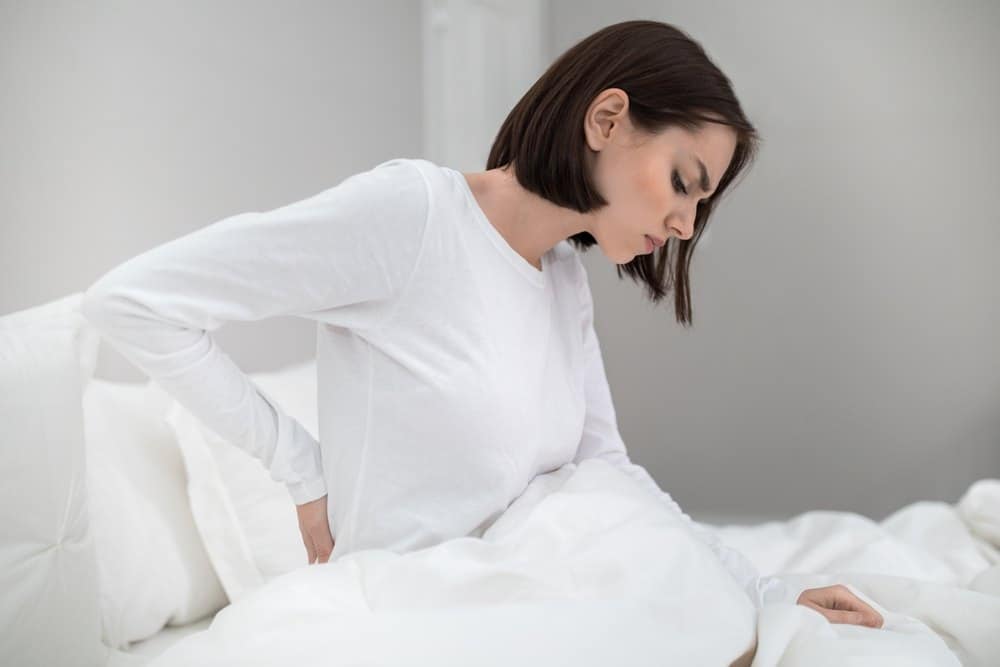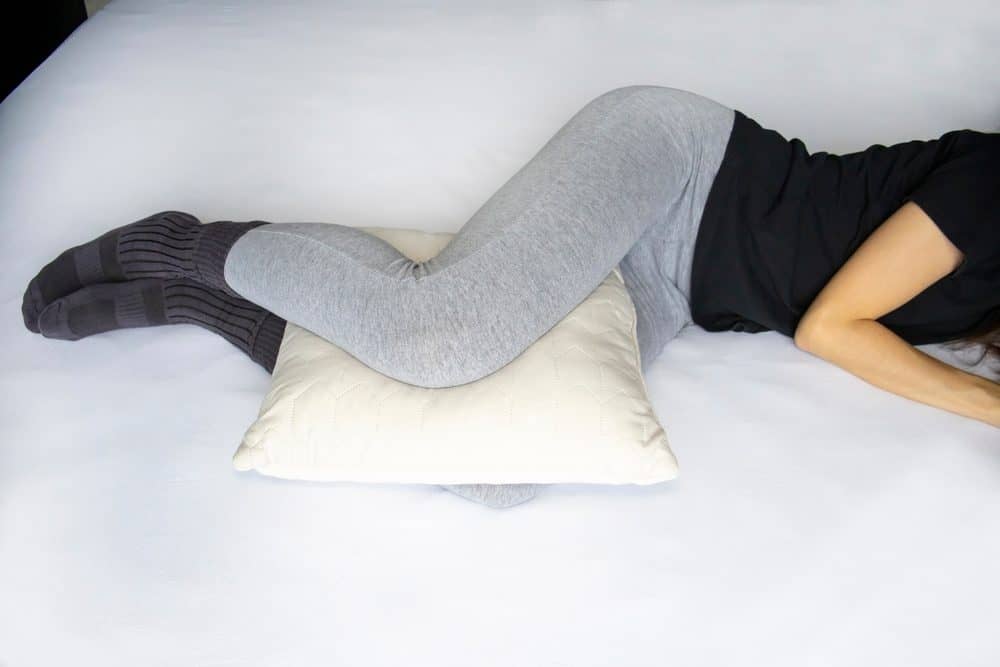Everyone knows the beauty of getting a good night’s sleep. When you sleep, your body has a chance to recover and restore itself after a long day. Good, quality sleep improves your mood, brain performance, and overall health. Everything from your appetite to your immune system benefits from you getting a good night’s sleep. But certain health conditions and issues like lower back pain can keep you from getting the quality of sleep you deserve. Check out these five best sleeping positions for lower back pain to help reduce your discomfort and make sure you get a good night’s rest.
What Is the Connection Between Lower Back Pain and Sleep?

There is a connection between sleep and lower back pain, with several various factors contributing to this connection.
Sleep Position
The position you sleep in can impact your quality of sleep in a variety of ways. Your sleep position can impact the alignment of your spine, which can result in lower back pain and other discomforts. There are a variety of options for sleep positions that can help and harm your back, so it is important to sleep in a way that properly aligns your spine.
Mattress Quality
The quality of your mattress can also play a role in how your lower back pain and sleep are connected. A mattress that is too firm or too soft can put additional strain on your back, negatively impacting your spinal alignment.
Lack of Sleep
A lack of sleep can also contribute to lower back pain. When your body doesn’t get enough quality time to rest, it cannot properly address issues like inflammation. If you have a recent injury or health condition causing your lower back pain, inflammation that doesn’t get addressed naturally while you sleep can exacerbate lower back pain.
Stress
Stress can both interfere with your quality of sleep and contribute to your lower back pain. When you are stressed, you may tense up certain muscles, including those in your lower back. This can put added pressure on your back muscles and increase your pain. Stress can also make it difficult to get the rest you need.
The Importance of a Supportive Sleeping Position for Lower Back Pain
The way you sleep can significantly affect lower back pain and other issues you may experience, along with the quality of your mattress, the quality of your rest time, and any underlying medical conditions. In fact, the type of pillows and mattresses you sleep on can significantly impact both your sleeping position and lower back pain. The three main sleep postures include sleeping on your back, side, or stomach. When you sleep on your back, it can help maintain a neutral position for your spine, reducing pressure on your spine. However, you may need strategically placed pillows to support the natural curve of your spine.
Sleeping on your side can also help relieves pressure on your spine, though it is important to use a pillow between the knees to help keep the hips, pelvis, and spine in alignment. Sleeping on your stomach is often considered a more problematic position because it can lead to undue stress on the spine. However, you can use pillows for support to help reduce pressure on your back.
5 Best Sleeping Positions for Lower Back Pain

If you are dealing with lower back pain, try out these five sleeping positions to see what might work best for you.
Sleeping Position #1: Lying on Your Side with a Pillow Between Your Knees
Sleeping on your side with a pillow between your knees can promote healthy spinal alignment, reduce pressure on your lower back, and ease hip tension. The pillow between your knees helps keep your hips and pelvis from folding inward, putting additional stress on the lower back. Sleeping with a pillow between your knees while on your side can also elevate your top leg so that your spine doesn’t twist and instead stays in a neutral position.
Sleeping Position #2: Lying in a Reclined Position
Sleeping in a reclined position can also help relieve lower back pain in several ways. When you lie back in a reclined position, your back gets the support it needs, and your weight gets distributed more evenly. This sleeping posture can alleviate pain by reducing pressure on your lower back. A reclined position can also help support the natural curve of your spine. Plus, when you lie in a reclined position, your head and neck get the proper support to help relieve any tension in your back.
Sleeping Position #3: Lying on Your Stomach with a Pillow Under Your Hips & Abdomen
Sleeping on your stomach with a pillow under your hips and abdomen may also help relieve lower back pain. Lying on your stomach to sleep can be a problematic position because it can put additional stress on your spine, especially in the lower back. When you lie on your stomach, your pelvis can sink into the mattress and exaggerate the curve of the spine. A pillow under the hips and abdomen can help promote healthy spinal alignment while lying on your stomach.
Sleeping Position #4: Lying in a Fetal Position
Sleeping in the fetal position refers to when you lie on your side with your knees tucked toward your chest. This sleep position promotes a natural curve to the spine while you sleep, which can help better distribute pressure on your back. Lying in the fetal position can also help take off the pressure on your lower back when you bring your knees to your chest and allow a gentle stretch. The fetal position can also cause the muscles in your lower back, hips, and pelvis to relax and reduce tension in the area.
Sleeping Position #5: Lying on Your Back with a Pillow Beneath Your Knees, Legs, or Lower Back
Sleeping on your back with a pillow beneath parts of your body can be an effective sleeping position for relieving lower back pain. When you lie on your back, place a pillow beneath your knees, legs, or lower back for additional support. These supportive pillows help maintain the natural spine curvature and reduce pressure. A pillow under your lower back can offer lumbar spine support, while a pillow under your knees can reduce pressure from the weight of your legs. Lying on your back also offers added benefits of improving blood flow and circulation, which may boost your healing time with quality rest.
Always Be Conscious of Proper Spinal Alignment When Sleeping
When you climb into bed at night, you want to pay attention to the general curvature of your spine. Is the way you currently sleep putting too much pressure on parts of the spine? Do you notice your shoulders, hips, or legs putting additional strain on your back? Try incorporating pillows for support and to alleviate lower back pain. Reducing pressure points and maintaining a neutral spinal position are key aspects of alleviating lower back pain while you sleep.
You can also talk to your chiropractor to learn more about how to reduce lower back pain during the day and night. At Pro-care medical center our back pain chiropractors will assess your spine and back to determine the root cause of your back pain and help you get a good night’s rest.



